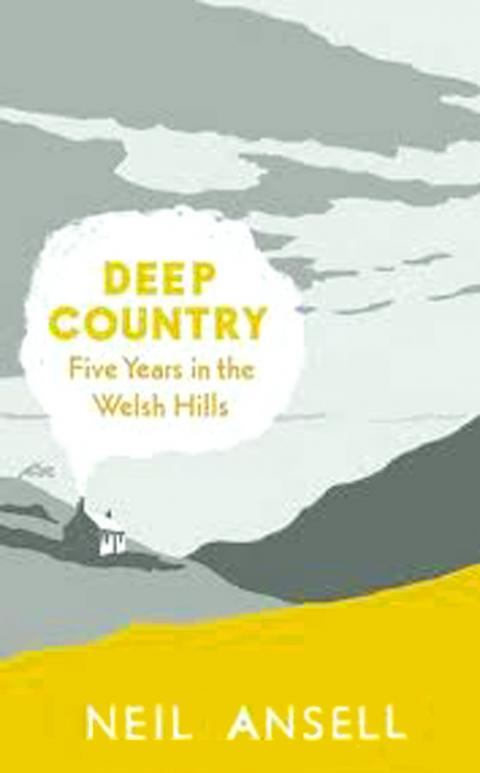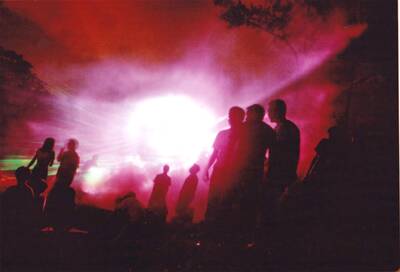Deep Country: Five Years in the Welsh Hills is a consistently engaging account of how the author, English writer and professional ornithologist Neil Ansell, went off to live alone in a derelict cottage in central Wales. Though actually only 50km as the crow flies from the English border, it was situated in the second most thinly populated region of the UK after the Scottish Highlands. The area’s emblem has long been the red kite, a bird that 30 years ago was so rare that the whole modern Welsh population of over 600 breeding pairs is thought to have descended from a single female.
The cottage stood at the top of a very steep field at the foot of which was a small, fast-flowing river thick with kingfishers and otters. Above it lay the heathery moors, home to larks and plovers and extending westwards virtually to the coast.
Sometimes Ansell sets off with a miniscule tent and enough food for three days into this wilderness, though most people would think where he was living was wilderness enough already. It was possible to walk west for 70km, he says, without coming across another house or road.

Friends occasionally come to visit, sometimes leaving early with a promise to return in better weather. Mostly, though, he’s on his own, a vegetarian stewing up blackberries, plums and crabapples for jams and jellies, and collecting forest mushrooms. He has no phone, no car and, needless to say, no TV or computer. When he needs to go to the nearest market town, to buy coffee and tea perhaps, he hitches.
And all around him are birds. Large numbers of species are observed and described in considerable detail — indeed this book is in some ways a specialist ornithological account disguised as a general-interest narrative. But viewed either way it makes an exceptionally absorbing read. I couldn’t put it down and finished it in under a day.
Little actually happens apart from what the birds make happen. He watches ravens flying upside down in a courtship display and is briefly adopted by one of them. He sees small birds at his bird table being picked off by hawks during cold winters, and actually relishes being snowed in one particularly bitter January. But all the time he’s sharing his hardships with the birds and animals, and he reports that he became the opposite of introspective over the time he spent in the cottage. Instead, he became an object in his own imagination, part of the very world he was observing.
Eventually he falls ill and is scarcely able to walk down to his postbox. He’s diagnosed as having a hormonal imbalance and begins on a slow recovery. A phone is installed in case of emergencies, but in the end he opts to leave. He now lives in Brighton, England, where he observes wildlife in a suburban setting, and contributes to natural history TV programs.
Accounts of men (rarely women, it seems) living alone in remote places go back a long way, from Defoe’s Robinson Crusoe through Thoreau’s Walden to Gavin Maxwell’s Ring of Bright Water. What’s the attraction? There is a long religious tradition of such retreats, and maybe modern recluses have a similar motivation — to be one with the pristine essence of things rather than cluttered up with the superficialities. But there’s always the question of what in particular is being escaped from, and Ansell is no more informative on this than most other voluntary solitaries. He has his own secrets, no doubt, and we have no right to demand to know what they are.
But in an article in the UK’s Observer newspaper last month he revealed that he sought his solitude at the age of 30 after years of rootless and near-penniless international travel, doing casual agricultural work when necessary. It was an irresistible desire to have children that made him leave Wales, he writes. He still goes back, though, letting the worries of town life slip away as he gets his wood fire going, collects water from a well, and lights his first candles.
But Ansell is certainly a very knowledgeable bird man and over the five years he was continuously in residence in his cottage he took part in bird-ringing and nesting-box-visiting programs on behalf of a local ornithological organization, claiming the first-ever sightings in the region of two species in the process. But these activities were incremental, and certainly not his reason for embarking on his retreat in the first place.
A pair of goshawks he sees startles him, and indeed it’s some time before he accepts that this is what they are because the species had been assumed to be extinct in the UK. Escapees from falconers, plus the occasional vagrant from continental Europe, must have been responsible, he thinks. Anyway, the local field center confirms their presence, plus a suspected breeding location close to his cottage.
To many non-Britons the scale of Ansell’s rural world will seem positively cramped. What are these Welsh distances compared to those available, say, in the US or Canada? But his is a foot-traveler’s world where journeys are measured by how many days’ walk somewhere is. And moorland, valley and the slopes between them constitute separate universes. They’re certainly home to different bird populations. Kestrels, peregrines, buzzards, the rare hobby, owls, sparrowhawks, magpies, pied flycatchers, nuthatches, goosanders, tits, finches and goldcrests — there can be few British birds that don’t get a mention somewhere in the text.
Despite being the author’s first book, Deep Country may well become a classic. I loved it because of the contrast between the author’s tranquility and the unceasing activity of the natural world he observes. I will certainly never part with my copy.

Cheng Ching-hsiang (鄭青祥) turned a small triangle of concrete jammed between two old shops into a cool little bar called 9dimension. In front of the shop, a steampunk-like structure was welded by himself to serve as a booth where he prepares cocktails. “Yancheng used to be just old people,” he says, “but now young people are coming and creating the New Yancheng.” Around the corner, Yu Hsiu-jao (饒毓琇), opened Tiny Cafe. True to its name, it is the size of a cupboard and serves cold-brewed coffee. “Small shops are so special and have personality,” she says, “people come to Yancheng to find such treasures.” She

Late last month Philippines Foreign Affairs Secretary Theresa Lazaro told the Philippine Senate that the nation has sufficient funds to evacuate the nearly 170,000 Filipino residents in Taiwan, 84 percent of whom are migrant workers, in the event of war. Agencies have been exploring evacuation scenarios since early this year, she said. She also observed that since the Philippines has only limited ships, the government is consulting security agencies for alternatives. Filipinos are a distant third in overall migrant worker population. Indonesia has over 248,000 workers, followed by roughly 240,000 Vietnamese. It should be noted that there are another 170,000

In July of 1995, a group of local DJs began posting an event flyer around Taipei. It was cheaply photocopied and nearly all in English, with a hand-drawn map on the back and, on the front, a big red hand print alongside one prominent line of text, “Finally… THE PARTY.” The map led to a remote floodplain in Taipei County (now New Taipei City) just across the Tamsui River from Taipei. The organizers got permission from no one. They just drove up in a blue Taiwanese pickup truck, set up a generator, two speakers, two turntables and a mixer. They

Hannah Liao (廖宸萱) recalls the harassment she experienced on dating apps, an experience that left her frightened and disgusted. “I’ve tried some voice-based dating apps,” the 30-year-old says. “Right away, some guys would say things like, ‘Wanna talk dirty?’ or ‘Wanna suck my d**k?’” she says. Liao’s story is not unique. Ministry of Health and Welfare statistics show a more than 50 percent rise in sexual assault cases related to online encounters over the past five years. In 2023 alone, women comprised 7,698 of the 9,413 reported victims. Faced with a dating landscape that can feel more predatory than promising, many in